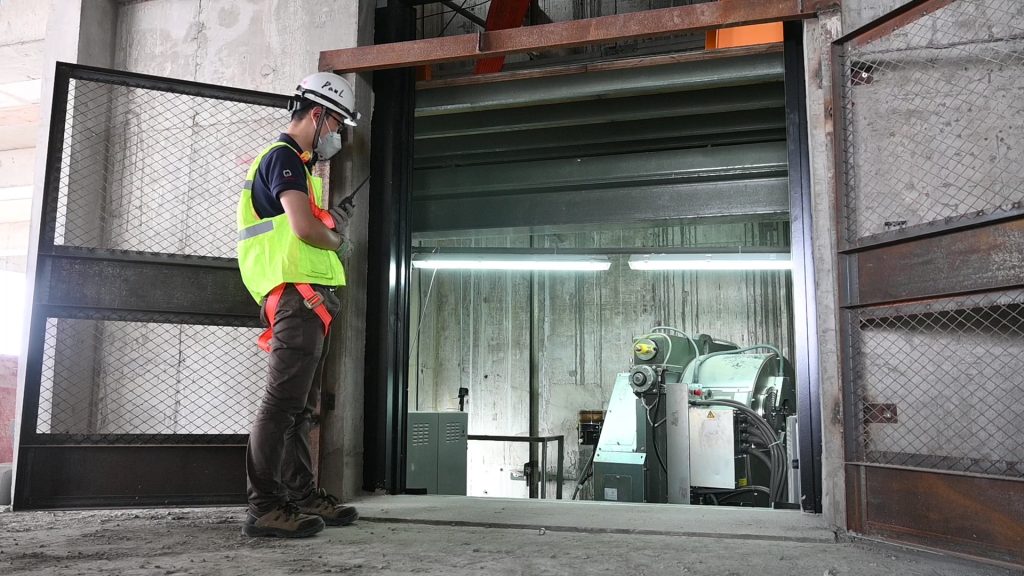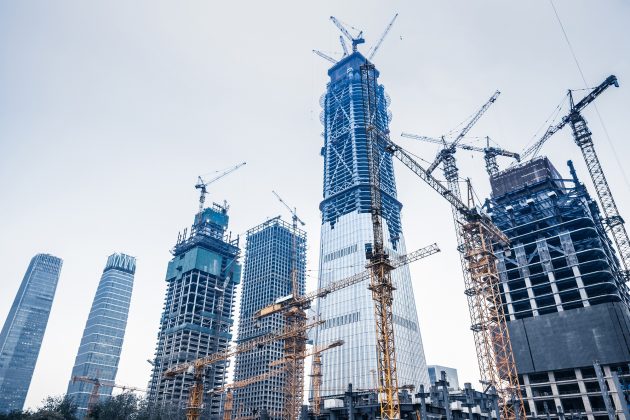
News
Lifting Equipment
CLIMB Lift updated, allowing greater facility for a variety of projects
August 16, 2022 By Don Horne
 The Schindler CLIMB Lift.
The Schindler CLIMB Lift. Schindler has made several updates for its Schindler CLIMB Lift – a self-climbing, vertical transportation system used in high-rise construction.

Stefan Weber
“Our original Schindler CLIMB Lift is over 20 years old, but during that time we’ve introduced several improvements and it keeps getting better. The data we’ve published – taken from real world projects – show the efficiency gains our Schindler CLIMB Lift can generate,” says Stefan Weber, Head Large Projects Operations at Schindler. “Not only does Schindler CLIMB Lift enable the earlier completion of work overall, but it also allows the façade to be closed sooner during the construction phase. This allows developers to let space much earlier than would otherwise be possible.”
Schindler CLIMB Lift has already been utilized in Canada, where it can be seen on the Bay Adelaide East tower in Toronto’s Financial District, which opened in 2016.
Elsewhere in North America, there is also a unit on the Downtown & Be Grand Reforma building, an imposing new skyscraper taking shape in Mexico City.
Weber says there were a number of reasons why the Schindler CLIMB Lift is particularly well-suited to Canadian projects.
“Because Schindler CLIMB Lift is configured inside the building, it is completely insulated from any adverse weather conditions, which external hoists are always exposed to. Also, in many locations across Canada there are noise restrictions in place for construction sites, which again limit usage of an external hoist. However, with the internal siting of the Schindler CLIMB Lift, projects are able to keep working day and night – and over weekends – without noise disturbances to the surrounding neighbourhood,” he says

Construction sites in Beijing, China.
Schindler has maintained a physical presence in Canada with headquarters in Toronto, since 1982, when it acquired Armor Elevator.
With developers and construction companies seeking continuous efficiencies on projects, Schindler has made notable additions to its Schindler CLIMB Lift, most significantly extending the compatibility of it to the Schindler 5500, in addition to its larger Schindler 7000.
By offering CLIMB Lift with the Schindler 5500, the product is now suitable to smaller buildings of 150 metres and below. In particular, the Schindler 5500 CLIMB Lift has been designed for Machine-Room-Less (MRL) elevator applications. It is a simplified design – yet still derived from the Schindler 7000 CLIMB Lift – which doesn’t require a lifting platform. While still offering the same advantages of the larger Schindler 7000 CLIMB Lift in terms of speed and efficiency, the Schindler 5500 CLIMB Lift is lighter and easier to install.
Schindler has also introduced a new design option enabling integration with the building’s formwork during construction. By integrating the lifting platform and crash deck of Schindler CLIMB Lift with the formwork, the entire system stays closer to the top of the building as construction advances. This integrated design also reduces the components and other materials in Schindler CLIMB Lift, while ‘jumping’ (moving from one floor to the next) is faster and easier.
The first delivery of a Schindler CLIMB Lift with the integrated option will go to the construction of Elbtower in Hamburg, Germany.
“The extension of the Schindler CLIMB Lift to the Schindler 5500 and our integrated solution for connecting with building formwork are just two examples of how continuous innovation is bringing greater value to our customers. It’s now suited to a wider range of projects and its improvements bring tangible gains to construction projects,” says Weber.
In addition to adding models to the product line and introducing new design elements, Schindler reports that Schindler CLIMB Lift has completed certification for EN81-20, the EU design test certificate. The certification for A17.1, the ASME Design Review Certificate in the U.S., is expected to be completed in September.
Faster working, bigger savings
Schindler believes that cost savings achieved with Schindler CLIMB Lift could run as high as five per cent of total building costs on a high-rise construction. This accounts for savings in reduced manpower from shorter build times and earlier income generation for developers from leasing space sooner.
This acceleration in leasing is possible because Schindler CLIMB Lift is an internal system, so the façade can be closed earlier in construction – something not possible on projects with external hoists.
Schindler CLIMB Lift sits inside a high-rise construction’s elevator shaft, so its effectiveness in moving people and materials is not dependent on the shape of the building, and this also means construction work can continue in any weather. Both these capabilities offer productivity benefits over external hoists.

Stockholm, Sweden Norra Tornen, a new skyscraper built 2018 with 35 coop apartments on Torsgatan.
In addition to the design advantages from being inside the building the difference in operating speed from Schindler CLIMB Lift is striking too. Data from Schindler, based on real-world analysis of projects, reveals Schindler CLIMB Lift can travel approximately five times faster than a typical external hoist: up to 5 m/s versus the 1 m/s of an external hoist. The data also shows that in a typical hour, an external hoist can move up to 260 people, while Schindler CLIMB Lift can move 600. Similarly, the average load carried by an external hoist is 20,800 kg per hour, while for Schindler CLIMB Lift it is 48,000 kg.
“When working methods are ingrained, people can often be reluctant to change,” says Weber. “But on projects where Schindler CLIMB Lift has featured the advantages over traditional external hoists are remarkable. And more and more real estate investors, developers, and general contractors are showing interest.”
Print this page